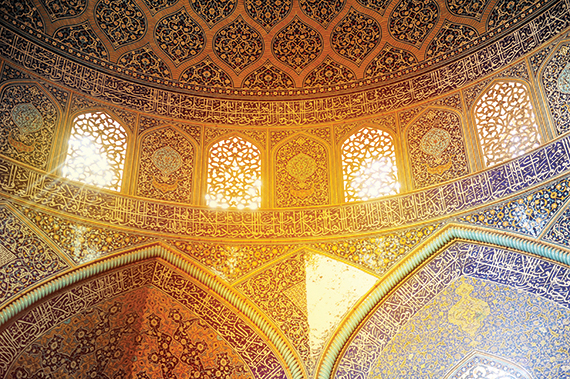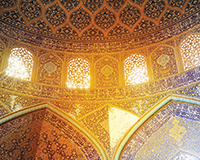 On 16 January this year, six world powers and the Islamic Republic of Iran reached a landmark agreement, lifting the sanctions that have crippled the country’s economy for more than a decade.
On 16 January this year, six world powers and the Islamic Republic of Iran reached a landmark agreement, lifting the sanctions that have crippled the country’s economy for more than a decade.
On the face of it, the move opened the doors to a new global investment hotspot. With the second-largest economy in the Middle East and North Africa – its GDP is $406.6bn (£282bn) – Iran is also home to the world’s second- and fourth-biggest reserves of natural gas and crude oil respectively. For the past 12 years it has been a virtually untapped market and with the sanctions finally lifted Iran is, once again, open for business. “It’s a big game changer,” says Neil Blake, CBRE’s EMEA head of research.
Scratch the surface, though, and some unique challenges bubble up. Inter-regime fighting, a question mark over the government’s human rights record and the resurgence of pre-revolution nostalgia, are but a few, not to mention the slumped price of crude oil. These factors are a threat to Iran’s stability and need to be considered by prospective property investors.
With that in mind, how likely is a property boom in Iran? Will its return to the global real estate market prompt capital flows in and out of the country as investors look for new revenue streams? Or will the challenges outweigh the potential rewards?
Eastern promise
The potential of the newly unlocked Iranian market is clear. In 2014, at the height of economic sanctions, some 206,000 construction permits were issued and with international trade now possible, that figure is set to soar.
“I suspect there is a shortage of pretty much everything, which is why the government is waiting to welcome overseas investors to invest in every sector of real estate,” says Faisal Durrani, Cluttons’ head of research. He adds that the company has already had international organisations looking speculatively for office, retail and warehouse space.
Iran’s president, Hassan Rouhani, wasted no time in embarking on a whistle-stop tour of Europe in January just two weeks after the sanctions were lifted, meeting with leaders in Italy and France, facilitating the signing of business contracts between Iran and the two countries valued at €17bn (£12bn) and €40bn respectively.
But who will be bold enough to test the water? “There are always a few brave souls out there that want to get in early, but the bulk will be more conservative and wait to see what happens,” says Blake. “It’s likely to be private equity that goes in first rather than major institutional money.”
Cluttons’ Durrani agrees: “It’s not going to be an instantaneous flood of capital either way. It’s beneficial to the economies in the region for it to be a new demand stream that gradually builds up over time, rather than a one-off economic saviour.”
All-encompassing demand
Although demand might be slow and measured, the good news is that it is likely to cover all sectors of the country’s property market.
Yunis Salayev, managing partner at the Azerbaijan office of accountancy firm BDO, says expansion of the commercial real estate market will come first.“Lots of international companies will be opening their offices in Iran to understand the market and do their research. There will probably be supermarket chains entering the country, so this will drive demand for commercial properties first.”
The residential sector is likely to follow suit, driven initially by internal demand, but also as a result of increased activity by development companies. Tehran, the nation’s capital and most populous city, has seen average rent soar from $1,017.50 in 2010 to $1,455.33 per month in 2015 for a three-bedroom city centre apartment, as demand continues to outstrip supply and creates the potential for investment in the PRS.
Blake adds that, like Turkey over the past 20 years, a thriving retail sector and possible shopping centre boom could follow as the consumer economy grows.
Most of this investment scope will be in Tehran. “It’s about the same size as London,” says Blake. “And it already has a reasonable number of modern office buildings. But as the economy develops, you’d expect a need for more.”
Opportunity knocks beyond the capital too. Tehran’s neighbour Karaj; Esfahan, which is 200km south of Tehran; Tabriz in the upper north-west; Shiraz in the south; and Mashhad, close to the borders of Turkmenistan and Afghanistan, are all in the top 200 fastest-growing world cities and urban areas from 2006 to 2020, according to City Mayors Statistics. Some of the country’s southern islands also offer exciting prospects, including the port city of Qeshm, which has been earmarked as a free trade zone. A new masterplan for expansion at its international airport was revealed last week alongside the government’s aim to build a new £532m port on the island to help position it as one of the main shipping and transit hubs in the southern Gulf.
“All of this hinges on the Iranian government’s plan to upgrade its infrastructure, helped by the $100bn of debt it can now collect from overseas banks. If the government delivers on its pledge, overseas investment is likely to pour in.
“Infrastructure investment tends to be a catalyst in the region generally, especially given what’s happened to oil prices,” says Durrani. “Once you get the ball rolling you might reach a point at which the economy becomes self-sustaining. We’re seeing that in Bahrain, where government programmes to build railways, oil infrastructure and new roads are creating jobs in the construction sector and real estate services. Then you get legal firms moving in, they bring their families with them and need somewhere to live and schools for the children. Therefore schools need to be built, then teachers come in, they have families and need homes. It starts to roll that way.”
Risk and reward
Catalyst or not, embracing the business opportunities in Iran is still riddled with challenges. And this is demonstrated neatly by the fact that once the sanctions were lifted, European banks remained reluctant to handle Iranian payments for fear of the reaction they would get from the US authorities.
This is not surprising, given that many were stung by hefty fines in the past. Standard Chartered, which was fined $667m in 2012, made it clear it would not deal with any entity that had anything to do with Iran, while Deutsche Bank said that, for the time being, it would “stick to its decision of withholding from doing business connected to Iran”.
The reticence of the banks is not helped by separate terrorism-related sanctions that remain in place. The Iranian Revolutionary Guard is sanctioned because it is considered to be a terrorist entity. It also happens to control a huge portion of the economy, making it almost impossible to operate in Iran without encountering it. In addition, nuclear sanctions could “snap back” into place for 10 years, with a possible five-year extension, should any aspect of the deal be violated.
Institutional uncertainty is another major challenge, says Blake. “We don’t know how the legal framework works. If you buy something, how secure is the title to it? If you’re renting something out, how strong is your ability to enforce the rent? This isn’t unique to Iran. It’s the same for any new market.
“It’s another reason joint ventures with local players are popular – not just because you have to, but because you’re teaming up with somebody who hopefully does know what the local market conditions are.”
Salayev points to the risk of corruption, suggesting that the inflow of foreign capital will increase bribes for construction permits and government contracts. He says: “It will depend on the tone that the government sets but these new opportunities also offer public officers at different levels of municipalities a chance to get their share of earnings.”
Although the lifting of the sanctions has opened up a raft of opportunities in Iran, the list of challenges is just as long, if not longer. Who might reap the rewards? Fortune favours the brave. And all eyes will be on Iran to see just how much international investors are prepared to risk.
Outflow from Iran: Another real estate opportunity?
Capital flowing out of Iran provides another opportunity for real estate. Wealthy Iranians are looking to furrow their wealth into residential property in international hotspots.
There are 32,000 high net worth individuals in Iran, according to New World Wealth. That figure includes 65 individuals valued at more than $100m (£71m) and four billionaires, while the number of HNWIs is expected to grow by 70% over the next 10 years. With sanctions lifted, Iran’s GDP could rise by 5% in 2016.
Faisal Durrani, head of research at Cluttons, says he dealt with a number of high net worth Iranians at Cityscape Global last October who were interested in moving funds out of their country and into places such as Dubai and London. He fielded enquiries about investments of £2m to £5m.
But Adam Challis, head of residential research for JLL, believes it may be some years before Iranians represent a “cohort of buyers worth noting”. “The presumption is a rush of cash towards prime London,” he says. “Our view is that it could happen, but far more likely is a slow uptick in demand over several years.”











